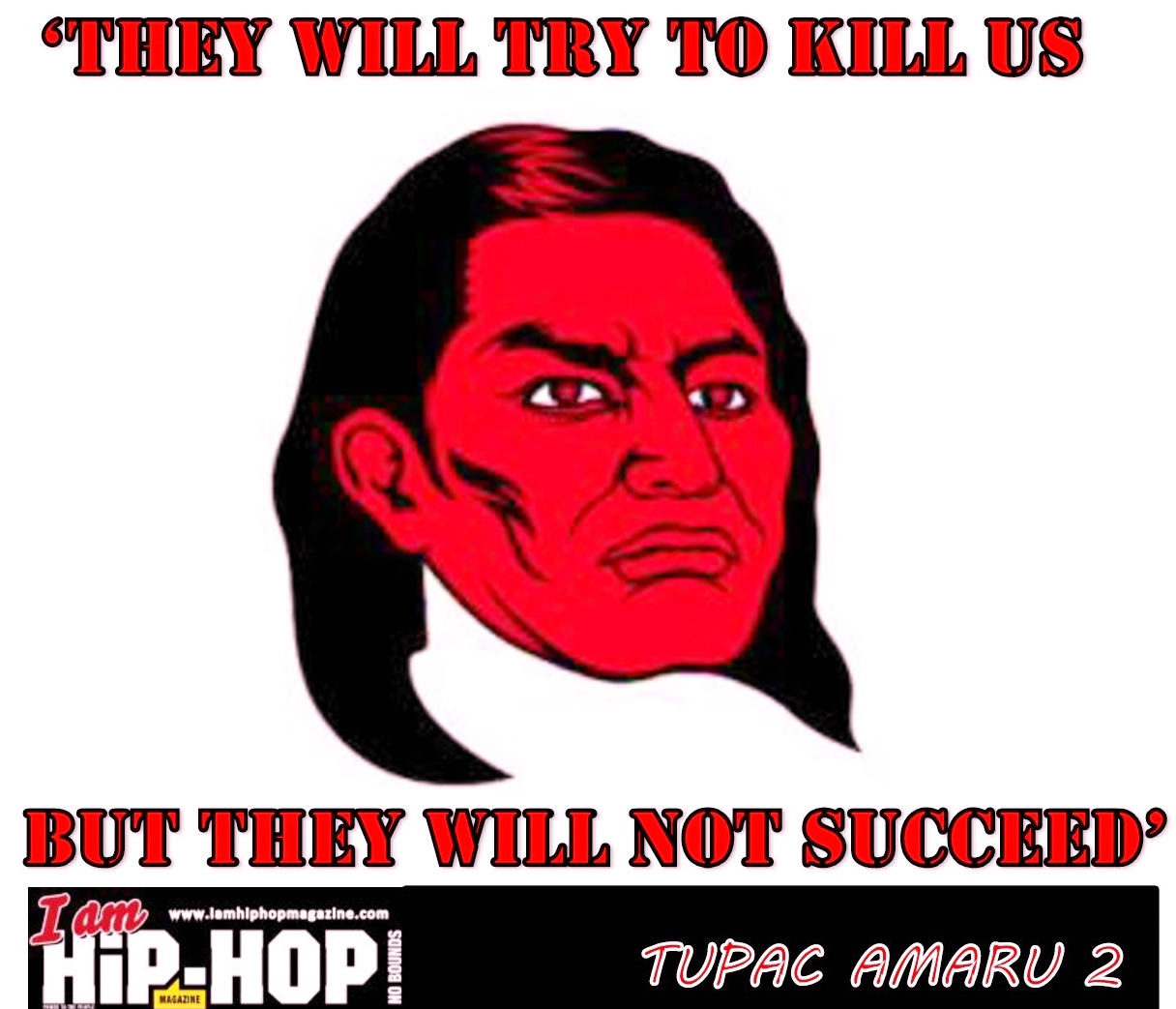José Gabriel Túpac Amaru (March 19, 1742 – May 18, 1781) — known as Túpac Amaru II hence the origins of 2pac Shakur’s name (Tupac Amaru Shakur), — was a leader of an indigenous uprising in 1780 against the Spanish in Peru. Although unsuccessful, he later became the inspirational figure in the Peruvian struggle for independence and indigenous rights movement and an inspiration to a myriad of causes in South America.
Tupac Amaru 2 was forced to bear witness to the execution of his wife, his eldest son Hipólito, his uncle Francisco Tupa Amaro, his brother-in-law Antonio Bastidas, and some of his captains before his own death. The following is an extract from the official judicial death issued by the Spanish authorities which condemns Túpac Amaru II to torture and death.
“It was ordered in sentence that Túpac Amaru II was condemned to have his tongue cut out, after watching the executions of his family, and to have his hands and feet tied “to four horses who will then be driven at once toward the four corners of the plaza, pulling the arms and legs from his body. The torso will then be taken to the hill overlooking the city… where it will be burned in a bonfire… Tupac Amaru’s head will be sent to Tinta to be displayed for three days in the place of public execution and then placed upon a pike at the principal entrance to the city. One of his arms will be sent to Tungasuca, where he was the cacique, and the other arm to the capital province of Carabaya, to be similarly displayed in those locations. His legs will be sent to Livitica and Santa Rosas in the provinces of Chumbivilcas and Lampa, respectively.”
Upon the dismemberment by quartering, he was then beheaded on the main plaza in Cuzco, in the same place his apparent great-great-great-grandfather Túpac Amaru I had been beheaded. When the revolt continued, the Spaniards executed the remainder of his family, except his 12-year-old son Fernando, who had been condemned to die with him, but was instead imprisoned in Spain for the rest of his life. It is not known if any members of the Inca royal family survived this final purge. Amaru’s body parts were strewn across the towns loyal to him as ordered, his houses were demolished, their sites strewn with salt, his goods confiscated, his relatives declared infamous, and all documents relating to his descent burnt.At the same time, on May 18, 1781, Incan clothing and cultural traditions, and self-identification as “Inca” were outlawed, along with other measures to convert the population to Spanish culture and government until Peru’s independence as a republic. However, even after the death of Amaru, Indian revolt still overtook much of southern Peru, Bolivia and Argentina, as Indian revolutionaries captured Spanish towns and beheaded many inhabitants. In one instance, an Indian army under rebel leader Túpac Katari besieged the city of La Paz for 109 days before troops sent from Buenos Aires stepped in to relieve the city.
Glory to Tupac Amaru 2! Glory to our heroes! Long live the resistance!
Gata Malandra
Latest posts by Gata Malandra (see all)
- Event: World Crew Battle UK By Swatch — October 11, 2017
- Knowledge Session: Who Was Manco Inca? — May 4, 2017
- Video + Letra: Illmani ‘Saber es Poder’ — February 3, 2017

